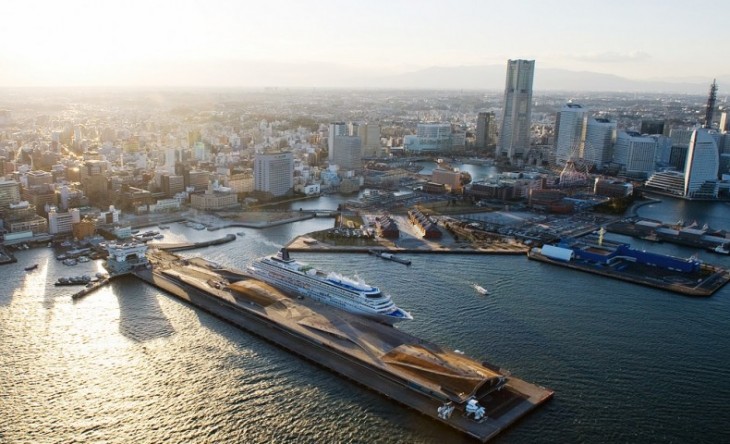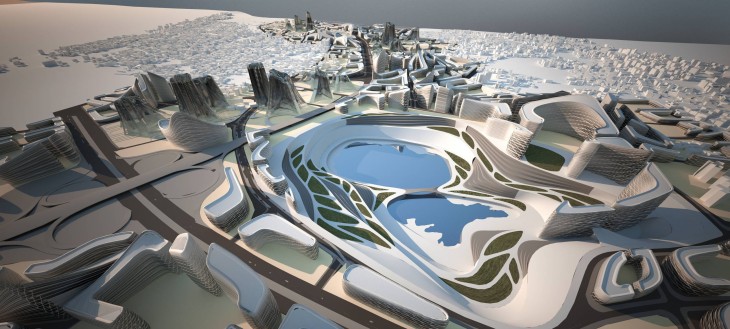Features of the Yokohama International Port Terminal:
- One of the key features of the project is the idea to fuse the function of a port, with a public space. It is a continuation of two parks on either side, making the green space seamless.
- Another interesting feature is the multidirectional arrangement of piers, which is different from the conventional setup.
- Through stepwise development of lines of the circulation diagram, folded and bifurcated spaces that enabled different functions have been accommodated. The combining of the circulation system with the constructive system is one of the key features of this project. This blurs the boundary between the interiors and exteriors and also between different levels.
This is a marvellous piece of architecture that would cast an everlasting experience when a visitor stands at the tip of the green space, to be surrounded by water on three sides. Also, the idea of using circulation loops to solve interior planning at the same time use these lines to generate the structural system is interesting. However, the intended public experience could have been better shaped instead of leaving it as just a open ground which could become a dead space after a point.

Yokohama International Port Terminal
Parametricism- A New Global Style of Achitecture
By Patrick Schumacher
Contemporary Avant Garde movement, transforming with new design techniques has resulted in a new style called Parametricism. Parametricism is gaining importance within the Avant garde movement. It is in response to the growing Socio-economic needs of the 21st century, posing continuous design challenges at the global scale, allowing continuous innovation. The author has an interesting perspective towards evolving styles. He talks about how a style of architecture is an evidence of continuous evolution. The results gives us negative and positive heuristics that tells us which what to take and which what to avoid.To hold on to the initial concept that stimulated a research is important for succeeding eventually. Retaining the fundamental principles and basics that initiated the style need to be strongly preserved. Also challenges faced should be taken as advancement towards evolving a style.
Taboo: There is an intentional effort to avoid the conventional design ideas like using basic shapes like triangle circle and square directly.
Dogmas: Anything is possible
The extent of development of Parametricism as a style is controlled by the extent of development of digital tools that enable experimentation. Thus mastery over the tools becomes the deciding factor for working and evolving Parametricism. The author speaks about how the perception of order changes from medieval times to now, which is owing to the advancement in the field of digital tools etc that enable material computation. Frei Otto’s form finding models display certain characteristics of Parametric Architecture- Interdependency, where the change in one component leads to a chain reaction change in all other related components.
Parametricist Urbanism

Kartal Pendik Master plan by Zaha Hadid Architects
ZHA’s award winning project, Kartal Pendik Master plan, Istanbul demonstrates how parametric design facilitates better design solutions achieved through digital tools. It is amazing how a 6million sqm project can be solved using digital tools, optimising necessities and coming up with a solution which could have taken much longer, with no guarantee of success. However, increased dependency on tools might also become mundane after a point of time. Sometimes, simple things that go unnoticed might provide better solutions to our growing global challenges. The need of the hour is to strike a balance between the two and generate a favourable design solution.
Digital Logics- Yokohama International Port Terminal, is a project of Iaac, Institute for Advanced Architecture of Catalonia developed at Master of Advanced Architecturein 2015-2016 by:
Students: Sahana Sridhar
Faculty: Maite Bravo & Ricardo Devesa